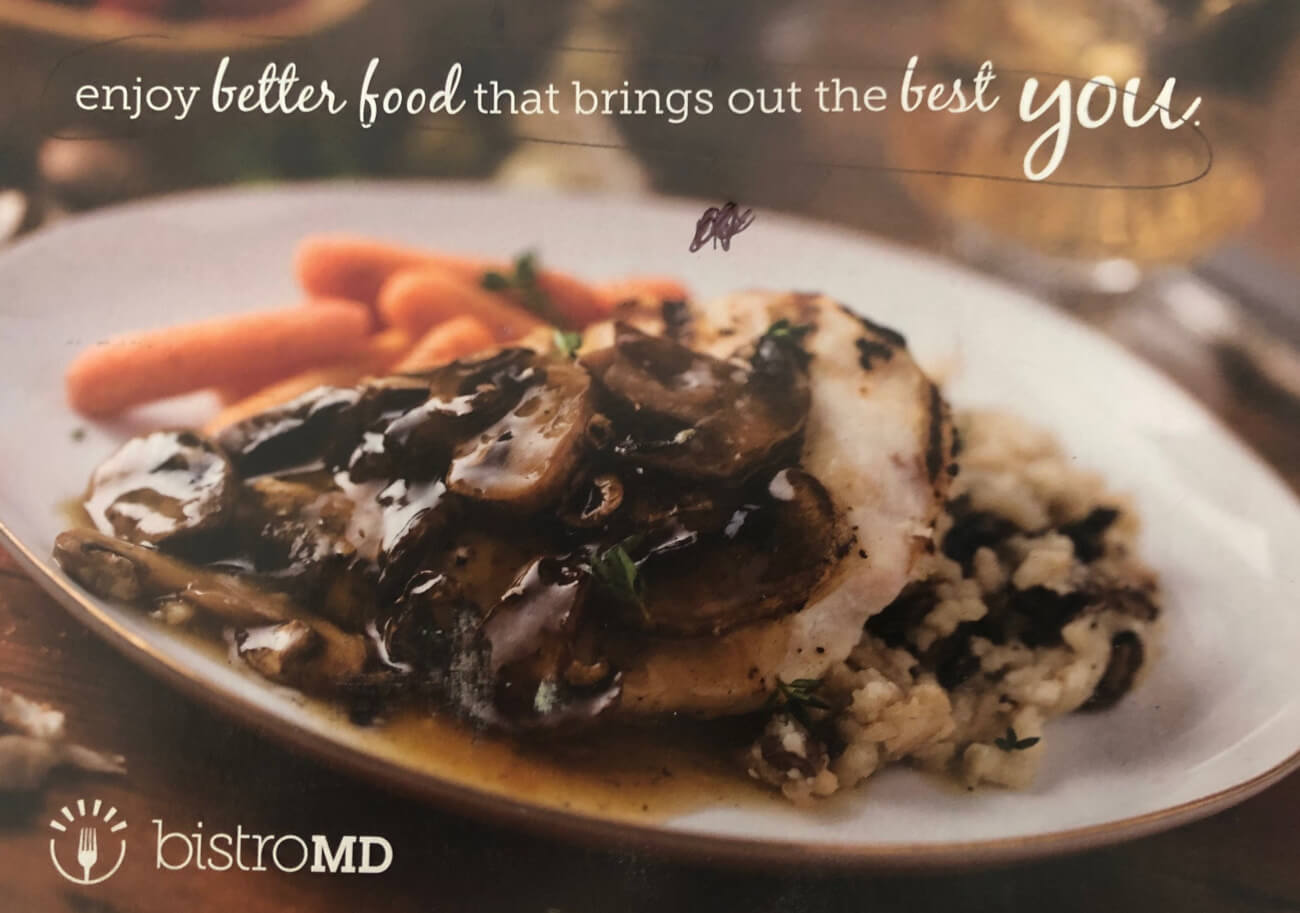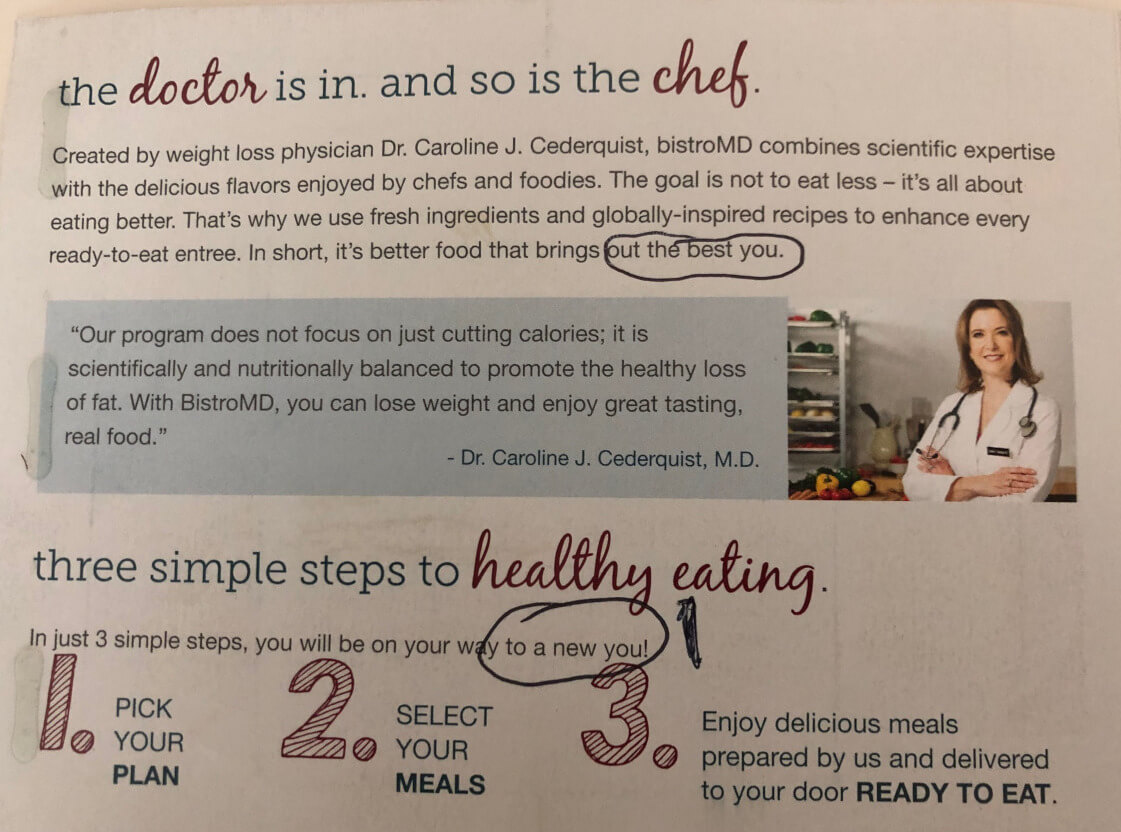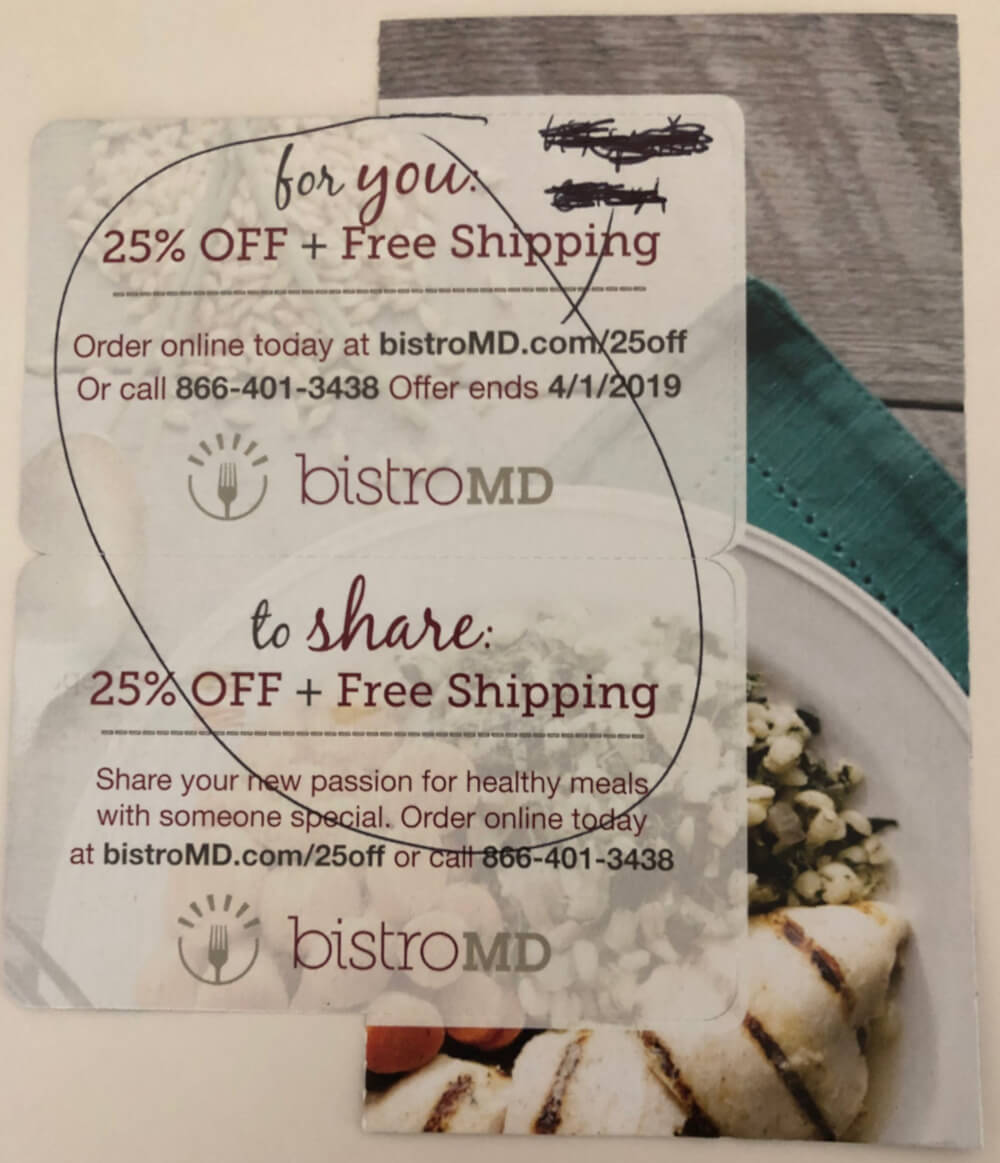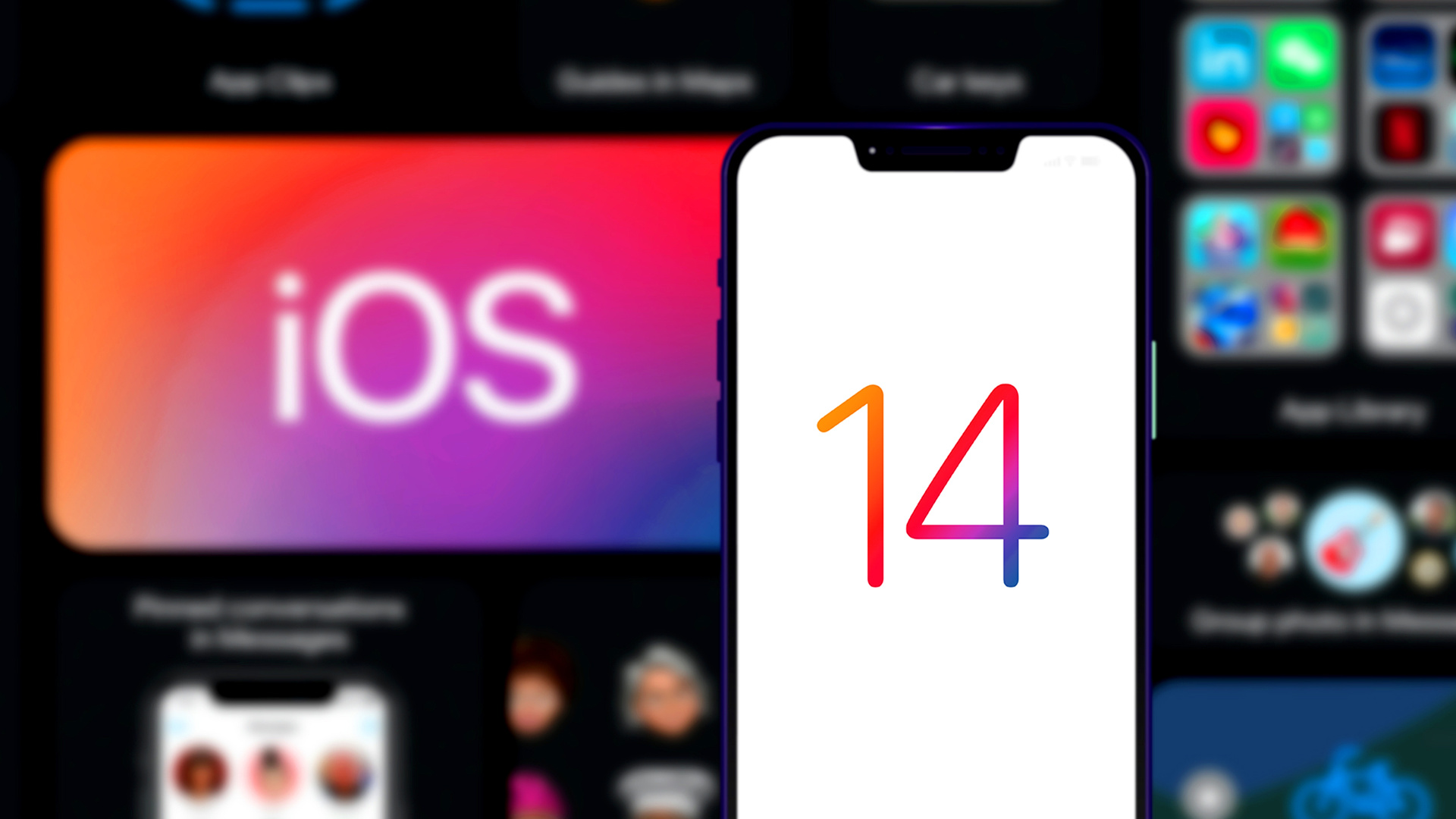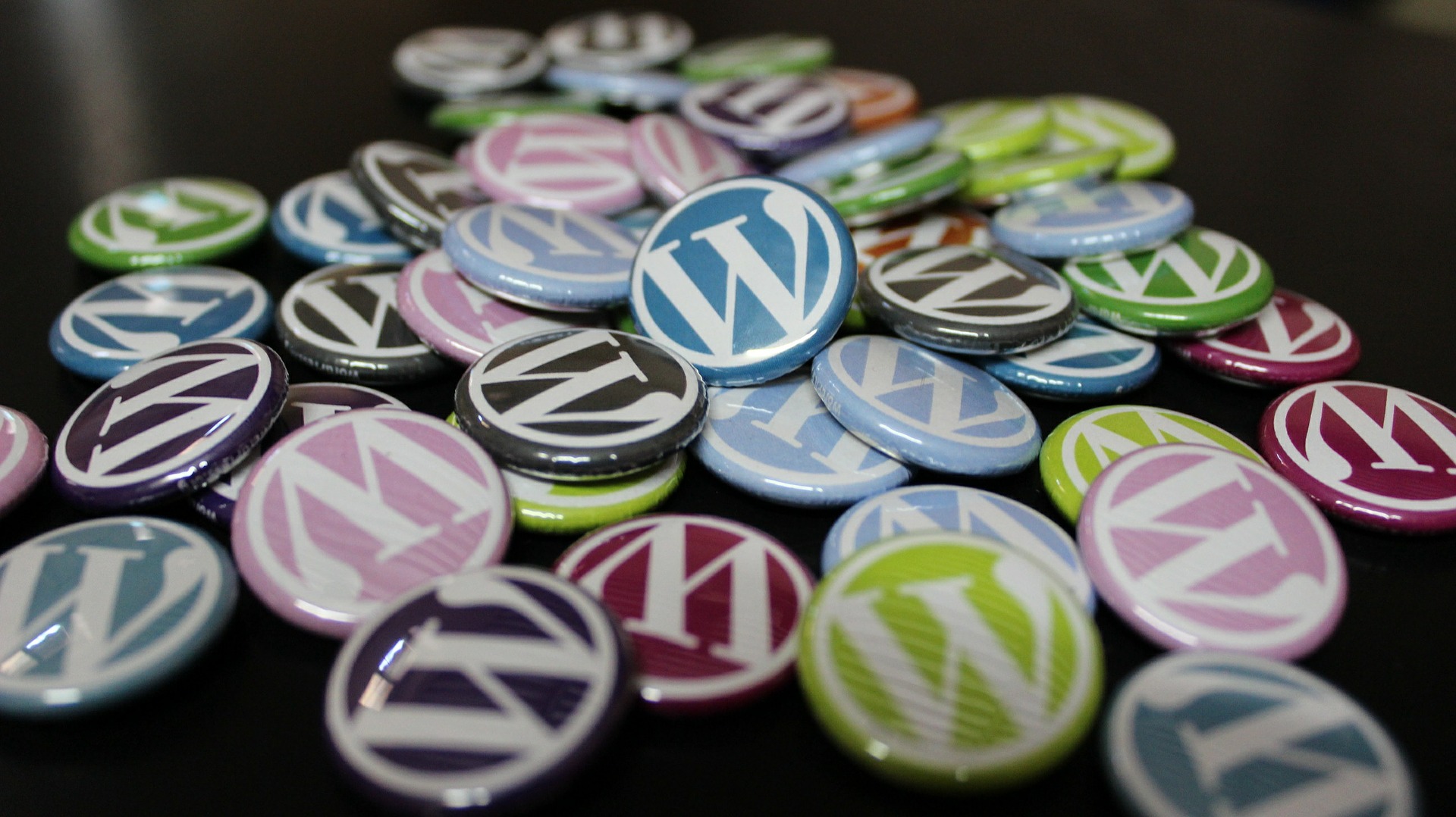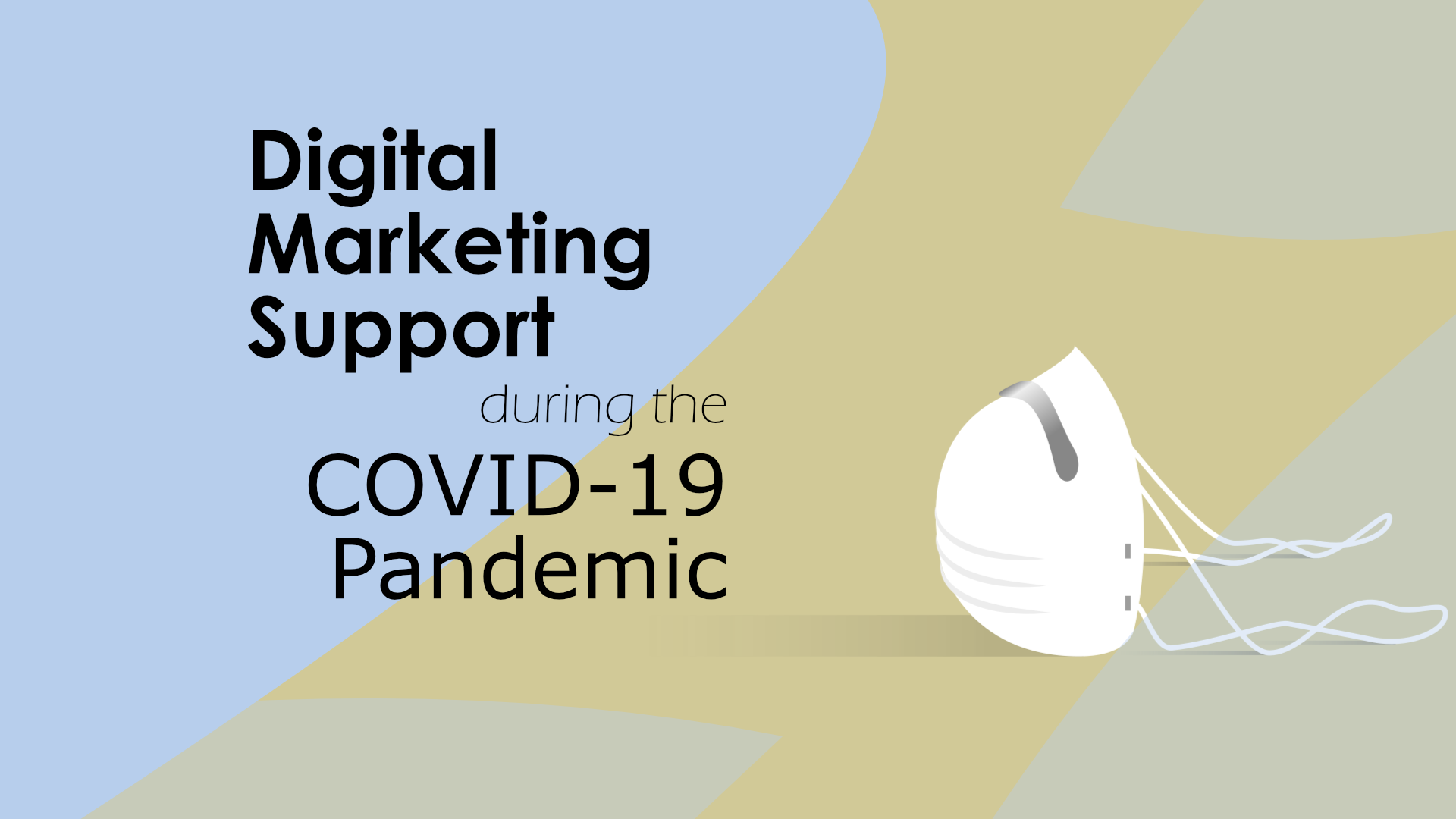The following is a guest post by Kyle McLean, a copywriter in the San Francisco Bay Area.
The best marketing copy uses language that is specific and emotionally driven in order to get customers to buy. It demonstrates their pain and effectively paints a picture of your company as the relief from that pain.
As a marketing copywriter, I love to pick apart the ads that come my way and take a critical look at how effective they are at doing this. And while it’s fun to marvel at perfection, I’d argue that you can learn more about copywriting not just by seeing it at its best but rather taking something poor or even just OK and figuring out how it can be improved. Doing so helps you build the tools necessary to examine your own copy for weaknesses and tighten it up until it’s highlighting your key benefits and packing an emotional punch.
I received a leaflet from a company called BistroMD in the mail recently, and while it’s solid, it offers three fantastic lessons on how to be more specific and really drive your point home when writing an ad.
In this article I’ll walk you through ways we can strengthen the tagline, highlight our customer’s problem and preview the solution, and improve the call to action. You’ll gain insight into the thought process to revise your copy until it shines.
Table of Contents
Lesson #1: Have a strong tagline
The tagline is your chance to pitch yourself in one sentence or a few short words. You either entice your audience to read more, or you fail. The best taglines manage to describe the whole product or experience in just a few words that stick in the readers’ heads.
With that in mind, here’s the tagline of this leaflet:
On the positive side, this tagline is concise, offers a product (better food) and communicates a benefit (that brings out the best you) if you buy it. It’s focused on “you” (the customer), not the company who makes it.
However, what exactly is “better” food? Is it healthier than what I have now? Is it something that tastes better? Is it more convenient? A good writer knows the difference between “She grabbed his arm” versus “She grabbed his elbow.” “Better food” is too generic to be emotionally effective.
Also, could anything be more varied to someone than the concept of “the best you”? While we might assume our reader will understand this is a product for weight loss, good copywriting is as clear as possible. “The best you” isn’t specific enough to grab your attention in this case.
If you think I’m being too harsh, consider how Snickers ran ads with the line “You’re not you when you’re hungry.” Whether or not I’m going to buy a Snickers, I know exactly what it’s like to be hangry. I don’t get that same feeling from this BistroMD ad.
With this tagline, you can’t easily draw connections to what it offers and what you need, and that could be the difference between someone reading it further or throwing it away.
Lastly, home delivery is a significant value proposition for BistroMD. If I read this tagline, I don’t see that mentioned in there.
On the address label, it says, “Healthy Weight Loss Delivered!”, which is much clearer, and while I can’t speak for them, you could assume healthy and delivered are the two value propositions they want to focus on. BistroMD could have just run with this on the other side. I’d always go with a functional line that can be understood over a creative line that, I’m arguing, doesn’t connect.
So how do we revise this?
Outside of using the functional tagline above, I’d suggest “enjoy healthy food delivered for you” or “enjoy healthy food that delivers for you.” This I especially like because it’s shorter than what’s currently there, maintains a similar message, and hints that it is delivered to you and also has an impact on your wellbeing.
Lesson #2 : Highlight the problem and preview the solution
Take a look at the body copy in this photo.
On the positive side, the ad copy highlights all the benefits and many details about how BistroMD’s service works. It’s informative and reads well.
The heading is good in that it communicates the benefit of a doctor/chef’s expertise is what’s at work with this food. The top paragraph communicates value by saying that it will satisfy a foodie but be healthy enough for a doctor. The doctor’s blurb is also strong and cuts down on the objection that you may have to eat terrible food or eat much less than before. The “three simple steps to healthy eating” paragraph previews how easy this service will be to use after you buy.
The problem here is, once again, “better food that brings out the best you” in the top paragraph and at the bottom “on your way to a new you!” It’s not as specific as it could be and risks losing its chance to make an impact.
So how do we revise this?
Instead of references to “new” and “best you,” I’d suggest painting a picture of what the current “you” is like and previewing what the new “you” will be.
Think of it like writing an effective cover letter that links all your experience to a job posting rather than sending in your resume of qualifications and relying on the hiring manager to make the connection. When you’ve got the chance to pitch, you take it.
We could have the physician or the copy say something along the lines of:
“We launched BistroMD for people struggling to lose pounds while following traditional weight loss formulas. Our service removes the struggle and frustration of dieting by putting together great-tasting, physician-approved meals for you and delivering it right to your door. It’s easy to stick to, and this time you’ll stay on track for success. With our formula, you will get the guidance you’ve been looking for so you can (finally!) lose that stubborn weight.”
I’ve never heard of this service, and I would imagine many potential customers have not either. Since there’s no social proof of success, they could add a testimonial. The physician establishes trust, but demonstrating results for added credibility would boost the copy.
If they couldn’t get a testimonial from a customer, they could preview the results in the ad by saying something like, “We have helped thousands of people end their struggles with yo-yo dieting, stick to a plan that works, and get results.”
Lesson #3: Provide a clear, compelling call to action (CTA)
A call to action is where an ad asks the customer for the sale. It is usually at the end of but sometimes throughout an ad as well. A good call to action is clear – telling the customer where to go, how to order, etc. – and when possible adds urgency — limited supply, orders filling fast, etc.
If you look at the calls to action here, you can see that they cover their bases. Still, if we want to get creative and improve them, they could be played around with. See if you can spot some ideas on how they have room to maneuver.
On the positive side, they clearly state the offer, describe how to order, and tell you when the offer ends – creating a sense of urgency.
Still, I see improvements we could make to both.
What’s the price?
One, the first call to action doesn’t list the price, which means we don’t know what we save with the 25% off discount. Because it’s not completely specific, 25% off may not be the best call to action for this leaflet.
If your customer is familiar with your company, you can run a percentage off. Say you’re a clothing store, like Gap. You’ve been around a while. Your customers can gauge what 25% off your store or website is worth and why they should be motivated by your discount.
This leaflet is highly informative, almost like an introduction. It looks like it’s aimed at new customers, and I had never heard of this brand. With that in mind, 25% off may not be the most effective offer to get new customers as it caters more to existing ones.
So how do we revise this?
Why not word it so we can understand the value or at least make it tangible? Why not offer free food every Friday if you sign up for a weekly plan? That’s a specific offer I feel I know something and like something about even if I haven’t heard the price for the other days yet. Now the focus is on getting free food on Fridays, not wondering what 25% off means.
Who’s that someone special?
In the second call to action, they are not specific with “someone special”. The promotion of sharing my passion for healthy meals with someone special misses the opportunity to suggest specific types of people who would benefit.
So how do we revise this?
Why not focus on, say, a family member who is busy, disabled, has trouble driving, or doesn’t have a vehicle and could use a meal delivery kit since it’s hard for them to get to the store? Convenience is one of the value propositions here, and that’s one piece of their target audience.
Lastly, why is the offer 25% off for referral? Other than helping them, what’s in it for me to persuade this person to sign up? Could they have afforded to run 35% off or another promotion if me and my friend sign up? Increasing the offer for two over one signup would help incentivize me to refer a friend or relative.
What did we learn?
This leaflet has some strong points and some things we could improve or experiment with. The copy is well-written overall, and I really get a sense of what they’re offering. However, there’s an opportunity to be more specific or beneficial to its target audience in some of its messaging.
The difference between a 1% response rate in direct mail, which is typical, and a 2% response rate in direct mail is not trivial; it’s twice as many orders from the same ad spend. Small margins make a difference. Whatever medium we’re advertising in, we must use all our tools to get the best return possible from the same spend.
If you want to get someone’s attention and make the sale, you must stand out by appealing as close to what your customer is looking for as possible and drive your solution home.
Now that you’ve seen some tips on how to evaluate ad copy such as this, I hope you can look at yours and plug in what’s missing.


